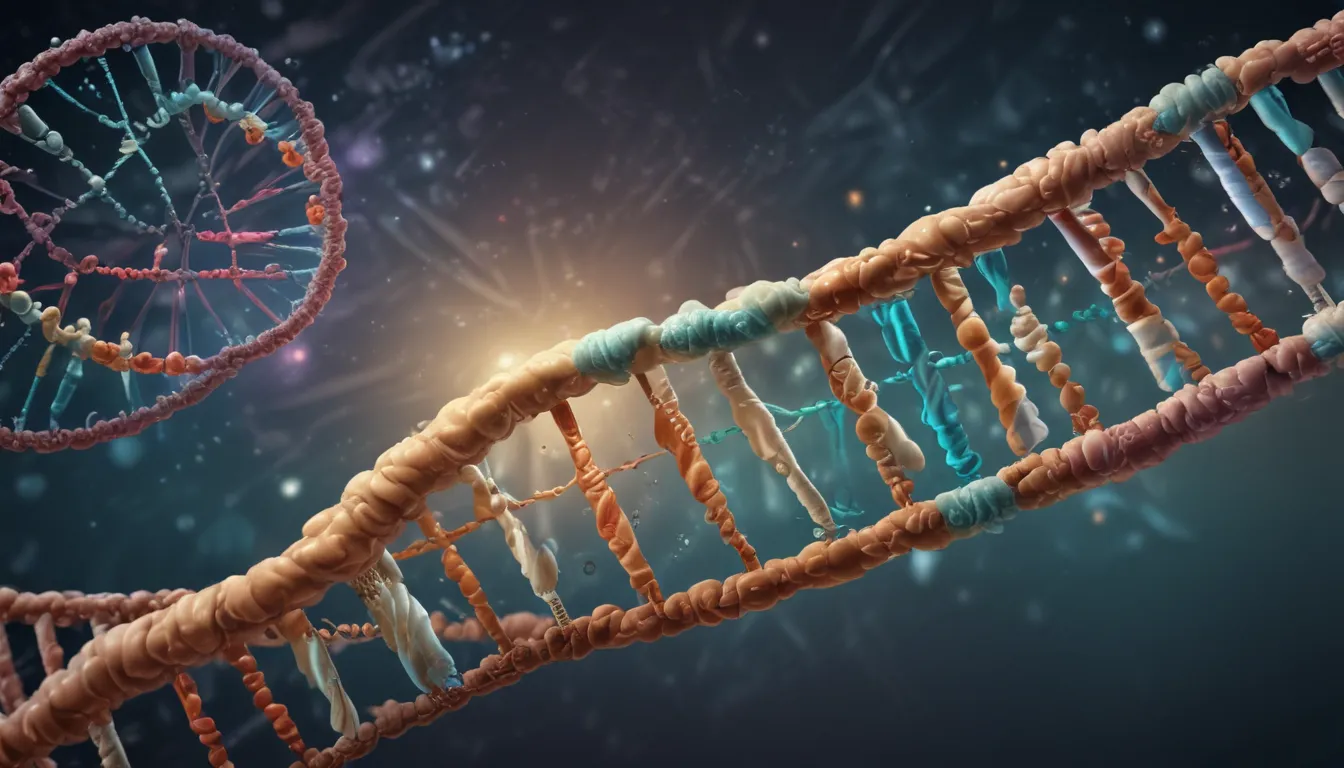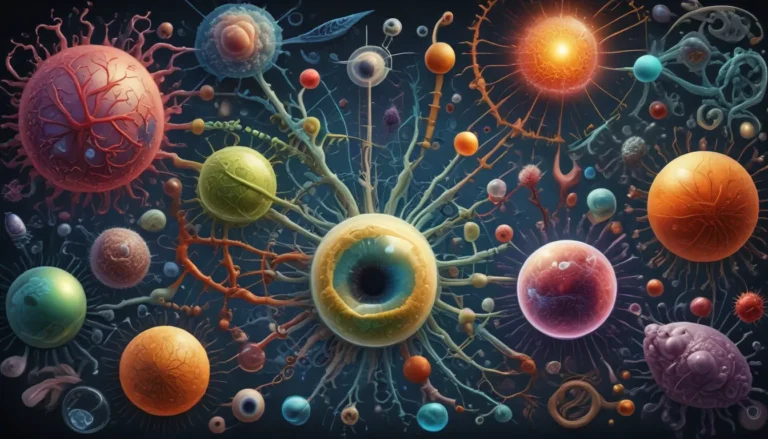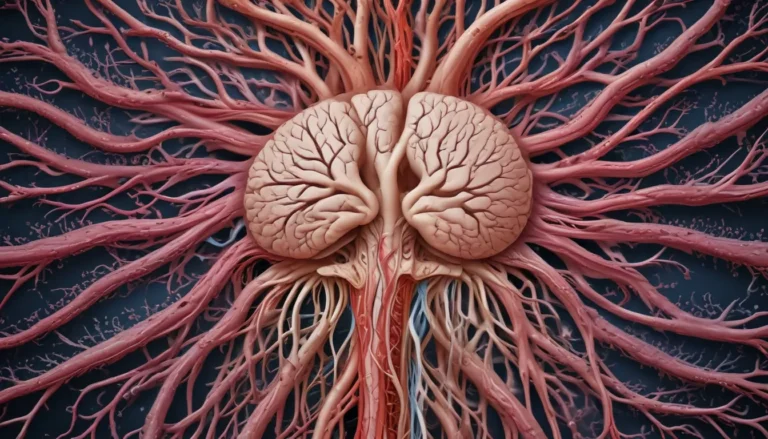A Note About Images: The images used in our articles are for illustration purposes only and may not exactly match the content. They are meant to engage readers, but the text should be relied upon for accurate information.
The realm of DNA repair mechanisms is a captivating landscape filled with intricate processes that safeguard the integrity of our genetic material. These molecular superheroes tirelessly work to maintain the stability and functionality of our DNA, ensuring that our genetic blueprint remains intact and free from mutations. Understanding these mechanisms not only unveils the complexity of molecular biology but also opens doors to groundbreaking medical advancements and innovative disease treatments. Join us on a journey as we uncover 20 enigmatic facts about DNA repair mechanisms, exploring the fundamental mechanisms that protect and preserve the essence of life itself.
Unveiling the Essence of DNA Repair Mechanisms
- DNA repair mechanisms are essential for genetic integrity: DNA, the cornerstone of life, undergoes constant damage from various sources such as chemicals, radiation, and metabolic processes. DNA repair mechanisms are the vigilant gatekeepers that correct these damages, preventing mutations and upholding the stability of the genome.
Exploring the Diversity of DNA Repair Mechanisms
-
Various types of DNA repair mechanisms exist: From direct repair to base excision repair, nucleotide excision repair, and mismatch repair, each mechanism boasts a unique set of enzymes and proteins that orchestrate the repair process with precision and finesse.
-
Direct repair simplifies the process: It involves the direct reversal of specific DNA lesions by specialized enzymes, without the need for external assistance.
-
Base excision repair tackles damaged bases: This mechanism identifies and removes damaged or abnormal bases, replacing them with the correct ones to preserve the DNA sequence.
-
Nucleotide excision repair is versatile: It addresses a wide array of DNA lesions, ranging from chemical adducts to UV-induced photoproducts, by removing damaged DNA segments and resynthesizing the missing regions.
-
Mismatch repair ensures accuracy: Dealing with errors that arise during DNA replication, mismatch repair eliminates mispaired bases to maintain the accuracy of the DNA sequence.
Unraveling the Implications of DNA Repair Mechanisms
-
Efficiency varies across cell types: Some cells boast more efficient DNA repair mechanisms than others, influencing their susceptibility to DNA damage and their ability to uphold genomic stability.
-
Impact on aging: The efficiency of DNA repair mechanisms diminishes with age, leading to the accumulation of DNA damage, which in turn contributes to the aging process and increases the risk of age-related diseases.
-
Environmental influences: Exposure to environmental factors like UV radiation and certain chemicals can heighten DNA damage frequency and affect DNA repair mechanism functionality.
Delving into the Uniqueness of DNA Repair Mechanisms
- Unique adaptations: Some organisms, like extremeophiles thriving in harsh environments, have developed specialized DNA repair mechanisms to survive and replicate in conditions lethal to others.
Understanding the Ramifications of DNA Repair Mechanisms
-
Genetic disease implications: Mutations in DNA repair genes can give rise to genetic disorders such as xeroderma pigmentosum and Lynch syndrome, characterized by an increased cancer risk.
-
Therapeutic targets: Cancer cells with faulty DNA repair mechanisms are prime targets for certain cancer therapies like radiation and chemotherapy.
-
Influence on antibiotics: Efficient DNA repair mechanisms in certain bacteria can counteract the effects of antibiotics that cause DNA damage, affecting the effectiveness of antibiotic treatments.
Embracing the Potential of DNA Repair Mechanisms
-
Personalized medicine implications: Assessing an individual’s DNA repair capacity can facilitate tailored treatment approaches by predicting their response to specific drugs and therapies.
-
Resistance development: Cancer cells can develop resistance to DNA-damaging agents by upregulating their DNA repair mechanisms, enabling them to survive and proliferate.
Embracing the Universality of DNA Repair Mechanisms
- Conservation across species: Key DNA repair genes and pathways are shared among diverse organisms, highlighting the fundamental significance of these mechanisms in preserving life.
Unveiling the Future of DNA Repair Mechanisms
- Ongoing scientific exploration: Scientists continue to uncover new enzymes, pathways, and regulatory mechanisms, further illuminating the intricacies of DNA repair mechanisms and their role in genome maintenance and disease prevention.
The Intriguing World of DNA Repair Mechanisms
The enigmatic realm of DNA repair mechanisms is an enthralling domain teeming with discoveries and possibilities. From detecting and correcting DNA damage to navigating a maze of repair pathways, these mechanisms are pivotal in safeguarding the essence of our genetic makeup. Through processes like base excision repair, nucleotide excision repair, and mismatch repair, our cells possess the tools needed to repair DNA damage and avert mutations. The exploration of DNA repair mechanisms not only enriches our understanding of fundamental biological processes but also harbors immense potential for medical advancements. By targeting specific repair mechanisms, novel therapies for diseases like cancer, rooted in faulty DNA repair processes, may be within reach.
As research continues to unveil new insights into DNA repair mechanisms, a deeper comprehension of our genetic architecture and its defenders is on the horizon. The enigmatic world of DNA repair mechanisms continues to enthrall and inspire scientists worldwide, paving the way for transformative discoveries that could redefine our perception of life itself.
FAQs
Q: What is DNA repair?
A: DNA repair is the process by which cells rectify damage in their DNA, ensuring its integrity and preventing mutations that can lead to genetic disorders and diseases.
Q: Why is DNA repair important?
A: DNA repair is pivotal for maintaining the stability and functionality of our genetic material, thwarting the accumulation of mutations that can trigger cellular malfunction, aging, and disease development, such as cancer.
Q: What are the different types of DNA repair mechanisms?
A: Various DNA repair mechanisms exist, including base excision repair, nucleotide excision repair, mismatch repair, homologous recombination, and non-homologous end joining, each tailored to address different types of DNA damage with specific enzymes and proteins.
Q: How do cells detect DNA damage?
A: Cells employ sophisticated molecular surveillance systems equipped with specialized proteins to detect various forms of DNA damage, triggering repair processes upon recognizing abnormalities in the DNA structure.
Q: Can DNA repair mechanisms be targeted for therapeutic purposes?
A: Yes, targeting DNA repair mechanisms shows promise for therapeutic interventions. Inhibiting specific repair pathways in cancer cells, for instance, could render them more susceptible to existing treatments, while enhancing repair mechanisms in other cell types might help prevent certain genetic disorders.
Q: Are DNA repair mechanisms efficient in all cells?
A: The efficiency of DNA repair mechanisms can vary among different cell types and individuals, influenced by factors such as age, environmental exposures, and genetic variations.
Q: Can lifestyle choices affect DNA repair?
A: Yes, certain lifestyle choices like UV radiation exposure, smoking, and poor dietary habits can heighten DNA damage likelihood and compromise the efficiency of DNA repair mechanisms. Adopting a healthy lifestyle can support optimal DNA repair processes.
Continue your exploration of groundbreaking scientific research with our captivating articles. Dive into the world of non-homologous end joining, a paramount DNA repair pathway. Discover more astonishing facts about DNA repair processes that uphold genetic stability. Delve into the remarkable contributions of Dr. Aziz Sancar, a pioneering scientist in the realm of DNA repair. These thought-provoking reads will deepen your comprehension of the intricate mechanisms safeguarding our genetic heritage.
Conclusion
The world of DNA repair mechanisms is a mesmerizing realm teeming with possibilities and discoveries. From the relentless vigilance in detecting and correcting DNA damage to the intricate web of repair pathways, these mechanisms stand as pillars safeguarding the essence of life itself. Through processes like base excision repair, nucleotide excision repair, and mismatch repair, our cells possess the arsenal needed to rectify DNA damage and prevent mutations.
As the saga of DNA repair mechanisms unfolds, our understanding of fundamental biological processes deepens, paving the way for pioneering medical advancements. By targeting specific repair pathways, novel avenues for disease treatments, especially in cancer characterized by flawed DNA repair processes, emerge. With each discovery, the enigmatic world of DNA repair mechanisms continues to mesmerize and inspire, ushering in a new era of transformative discoveries that may reshape our comprehension of life itself.






